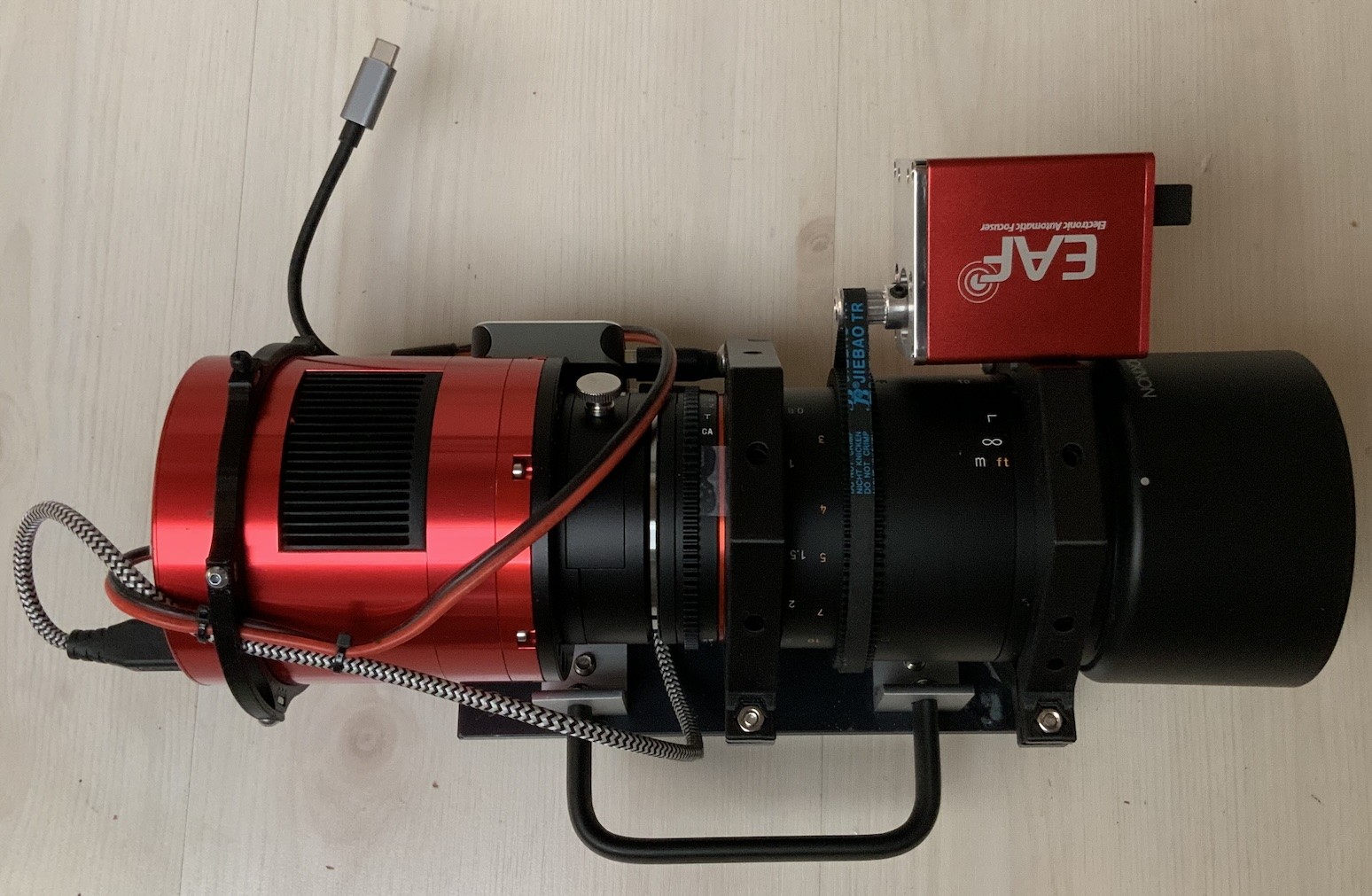Very nice, Kevin.
I have one of them on order -- good to see small pixel cooled camers for use with galaxies, and where sensor size is not an issue.
By the way, after years (literally) of chasing wide FOV lenses, I have converged on, ta da, the relatively cheap Samyang 135/2 (the Rokinon T2.2 version)! From initial tests, that is one sharp lens, but I need star fields (when clouds allow) to know for sure.
I had started the quest a while back with a Canon 100/f2.8L, then went through Askar ACLs and FMAs, and the Samyang 50/1.2 and the Sigma 135 ART... all gave mediocre stars.
I went for the Rokinon version of the 135 becase it is actually lots cheaper at Amazon than the Samyang 135 with RF mount, and it has the "follow focus" gears built in (the f-stop ring also does not have click stops, per typical cone lenses). EAF directly mounted (same Astrodymium rings for Samyang 135 work fine, and the EAF is mounted directly on one of the rings by drilling both an EAF and the Astrodymium).

Hoping to catch the Corona Borealis region as a "before" reference image before the Nova burst for an "after" image." The 135 with APS-C sensor is actually a reasonable framing too for the constellation. (6200 in the above picture, with the integral EOS mount+filter drawer -- new style drawer with no -- well almost no -- light leak.)
By the way, if you are using step-down rings to control your Samyang f-stop, try adding a UV camera-lens filter, but with the filter glass removed. The filter's aperture opening is lots cleaner than a typical threaded step down ring opening. The diameter needs to be re-measured, of course, since a 49mm filter has a clear aperture that is much smaller than a 49mm step down ring.
Chen